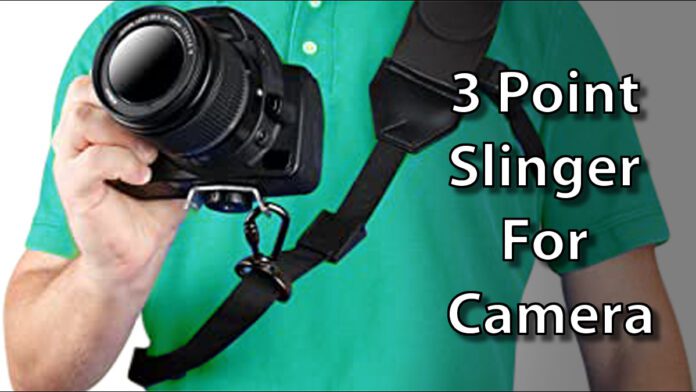Introduction
In the fast-paced world of photography and cinematography, equipment and techniques are continually evolving to meet the demands of creators seeking to capture breathtaking visuals. One such innovation that has significantly impacted the industry is the three-point slinger for cameras. This versatile accessory has revolutionized the way photographers and videographers capture images and footage, providing stability, mobility, and creative freedom. In this essay, we will delve into the evolution, components, and significance of the three-point slinger for cameras.
Evolution of the Three-Point Slinger
The concept of a three-point slinger for cameras originated from the need for stability and maneuverability when capturing images or footage. In the early days of photography and cinematography, cameras were bulky and required tripods or other stationary supports for steady shots. However, as technology advanced, cameras became more compact, prompting the development of handheld stabilizers.
- Handheld Stabilizers: The initial attempts at handheld stabilizers involved simple counterweights attached to the camera rig. These provided some stability but limited mobility. The introduction of the Steadicam by Garrett Brown in the 1970s marked a significant leap forward. The Steadicam used a gimbal system to isolate the camera from the operator’s movements, resulting in smooth and stable shots.
- Shoulder Rigs: In the quest for greater stability and versatility, shoulder rigs emerged. These systems featured a shoulder mount, hand grips, and a camera mount, distributing the weight of the camera across the operator’s body and allowing for steady shots while on the move.
- Three-Point Slingers: The three-point slinger for cameras represents the latest evolution in handheld camera stabilization. It combines elements of handheld stabilizers and shoulder rigs, offering a three-point support system that delivers stability, mobility, and creative freedom.
Components of the Three-Point Slinger
A typical three-point slinger for cameras consists of several key components that work together to provide a stable and ergonomic shooting platform:
- Harness System: The harness system is the core of the three-point slinger. It includes a padded harness worn by the operator, which distributes the weight of the camera and accessories evenly across the shoulders, chest, and back. This reduces fatigue during extended shooting sessions.
- Adjustable Straps: The harness features adjustable straps that allow operators to customize the fit to their body size and shooting preferences. Proper adjustment ensures comfort and balance.
- Camera Mounting System: The camera mounting system attaches to the front of the harness and securely holds the camera. It typically includes a quick-release plate for easy camera attachment and detachment. The mounting system is designed to provide stability and reduce vibrations.
- Counterweights: Some three-point slingers come with counterweights that can be adjusted to balance the camera’s weight and fine-tune the stabilization. Counterweights help prevent the camera from tilting or swaying during movement.
- Accessory Mounts: Many three-point slingers feature accessory mounts, such as cold shoe mounts or threaded holes, for attaching additional equipment like microphones, lights, or monitors. These mounts enhance the versatility of the system.
Significance of the Three-Point Slinger
The three-point slinger for cameras has become a game-changer in the world of photography and cinematography for several reasons:
- Stability: One of the primary advantages of the three-point slinger is its ability to provide stable shots even when the operator is in motion. This stability is crucial for capturing smooth, professional-looking footage, especially in dynamic shooting situations.
- Mobility: Unlike traditional tripod setups, the three-point slinger allows operators to move freely, whether walking, running, or navigating challenging terrain. This mobility opens up new creative possibilities and angles for capturing shots.
- Ergonomics: The design of the harness system minimizes operator fatigue, making it possible to shoot for longer durations without discomfort. This is especially important for documentary filmmakers and videographers working in demanding conditions.
- Versatility: The accessory mounts and customizable features of three-point slingers enable operators to adapt to various shooting scenarios. They can attach additional equipment to enhance the quality of their work and meet specific project requirements.
- Cost-Effective: Three-point slingers offer a cost-effective alternative to larger stabilizing rigs or steadicams. They provide professional-grade stabilization without the need for a dedicated camera operator.
Conclusion
The three-point slinger for cameras represents a significant leap in the evolution of camera stabilization technology. Its combination of stability, mobility, ergonomics, and versatility has made it an invaluable tool for photographers and videographers in a wide range of industries. As technology continues to advance, we can expect further innovations in camera stabilization, but the three-point slinger has already left an indelible mark on the world of visual storytelling, enabling creators to capture their visions with greater precision and creativity.
Also Read: Amazon’s Bedrock: Redefining Generative AI with Llama 2 Integration










